- BARJAC – Renaissance City
- VALLON PONT D’ARC
- Gorges de l’Ardèche
- Grottes Chauvet
- The rivers
- La Cèze
- L’Ardèche
- Le Chassezac
- La Beaume
- The remarkable villages :
- Vallée de la Cèze :
- MONTCLUS
- GOUDARGUES
- LA ROQUE-SUR-CEZE
- LUSSAN
- Vallée de la Cèze :
The wonders of Ardèche and Gard
THE REGION OF GARD
Barjac
A village of character located between Provence, Cévennes and Ardèche. Endowed with a “glorious” history, this Renaissance city seduces with its exceptional historical setting with Tuscan accents. A renovated heritage rich in discovery: squares and alleys reveal mansions, dungeons, castles and many remarkable buildings. Due to its geographical location, Barjac, frequented very early on by travelers, traders and pilgrims, is today known internationally for its “Antiques and Second Hand Fairs”, its Chanson de Parole festival and its many events.
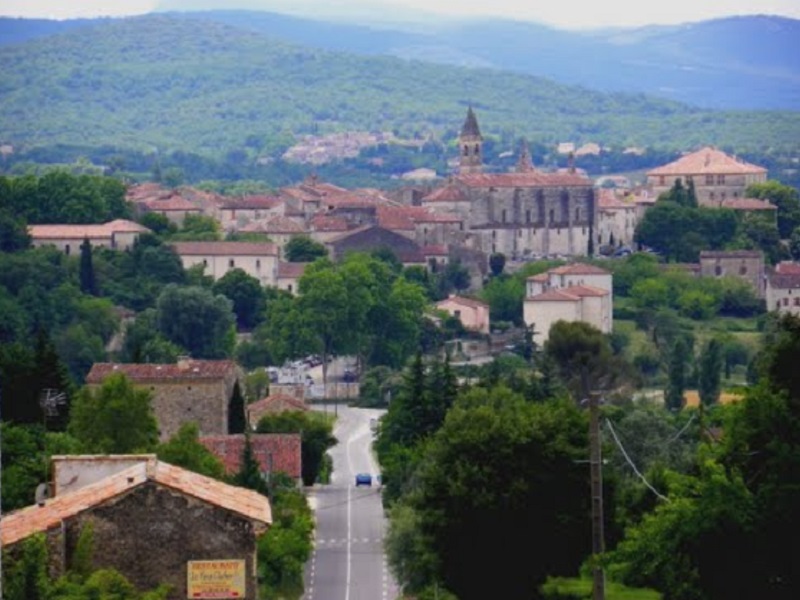
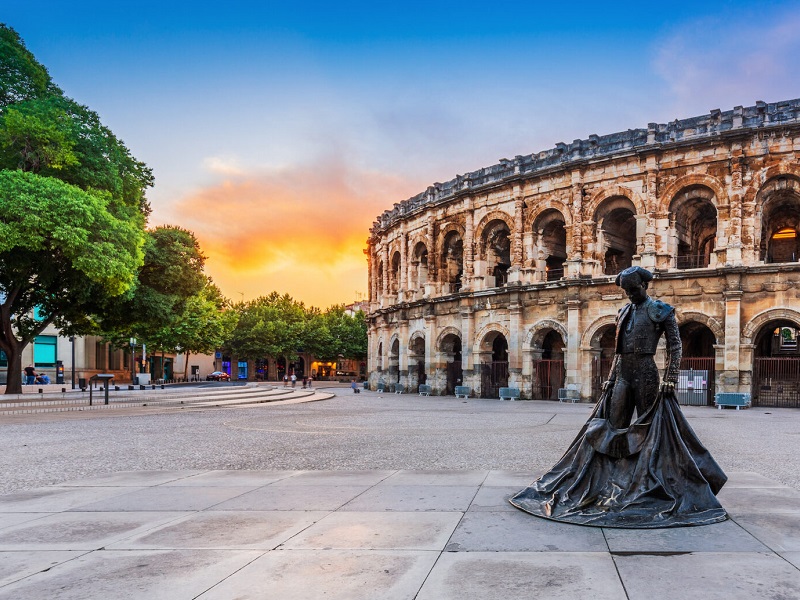
Nîmes
Nîmes, a city in Occitanie, a region in the south of France, was an important outpost during the time of the Roman Empire. It is known for its well-preserved monuments, such as the Arena of Nîmes, a two-storey amphitheater built around AD 70, still in use for concerts and bullfights. Also worth seeing is the Maison Carrée, a Roman temple in white limestone, and the Pont du Gard, a three-level aqueduct.
Les gorges de l’Ardèche
The gorges, which form a real canyon of about thirty kilometers dug in the limestone plateau between the Pont d’Arc (Vallon-Pont-d’Arc) and Saint-Martin-d’Ardèche, can be followed by car from the side north by a panoramic road through the scrubland. On their lower course, they form the border between the departments of Ardèche and Gard. Many belvederes whose names are linked to the different sites have been set up on the route, from the Serre de Tiourre embracing the view of the Cévennes towards Alès at the entrance of the gorges to Ranc Pointu before the panorama of Aiguèze, Saint-Martin-d’Ardèche and, in the distance, the Rhône plain and Mont Ventoux.
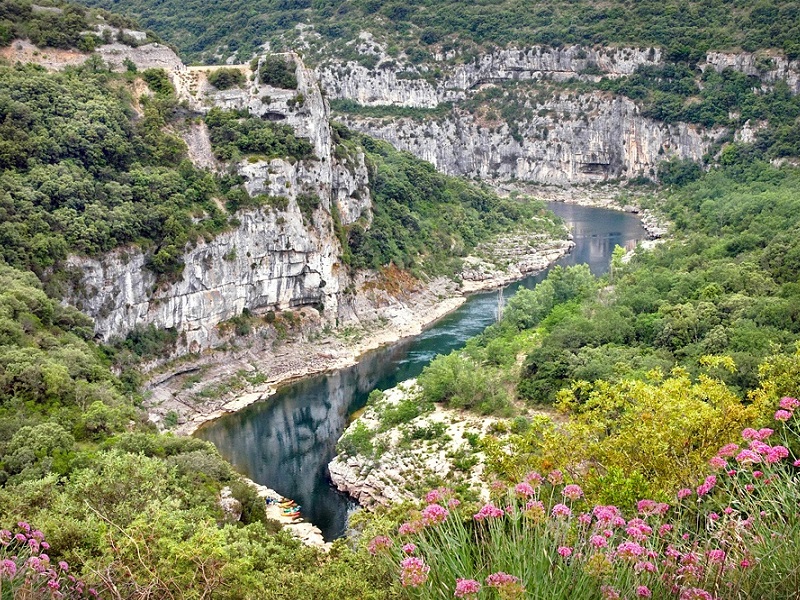
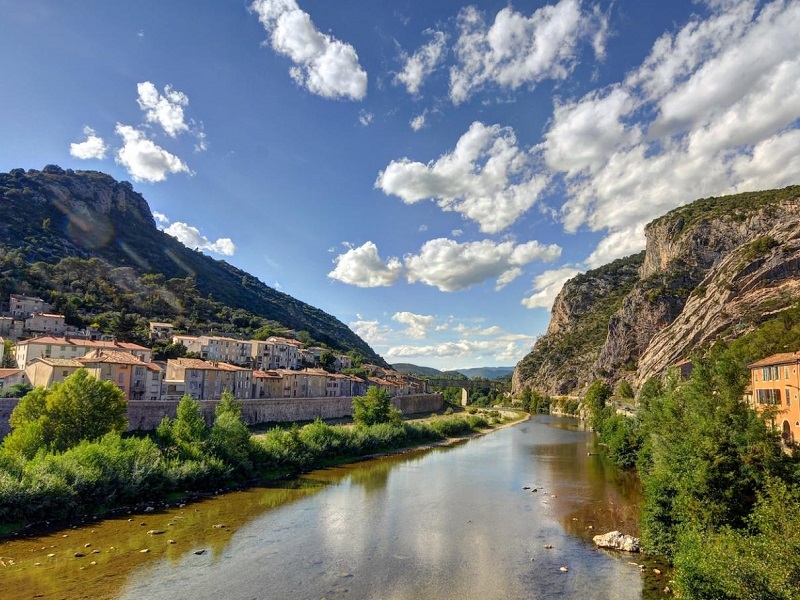
Anduze
In Occitan Andusa, is a French commune located in the center of the Gard department, in the Occitanie region. Exposed to a Mediterranean climate, it is drained by the Gard and various other small rivers. Included in the Cévennes, the town has a remarkable natural heritage: a Natura 2000 site (the “cliffs of Anduze”) and three natural areas of ecological, faunal and floristic interest. A steam train leaves from the Anduze bamboo grove.
Le Grau-du-Roi
Le Grau-du-Roi, is a town in the Camargue, more precisely in Petite Camargue, located in the south-east of France, in the south of the department of Gard in the Occitanie region. Exposed to a Mediterranean climate, it is drained by the Vidourle and by another watercourse.
Le Grau-du-Roi is thus renowned for its abrivado and bandido which take place during its votive festival, for its arenas entirely dedicated to the Camargue race as well as for its old lighthouse. The east of the town is occupied by the Pointe de l’Espiguette, a vast protected natural area which houses the Espiguette lighthouse, classified as a historical monument.
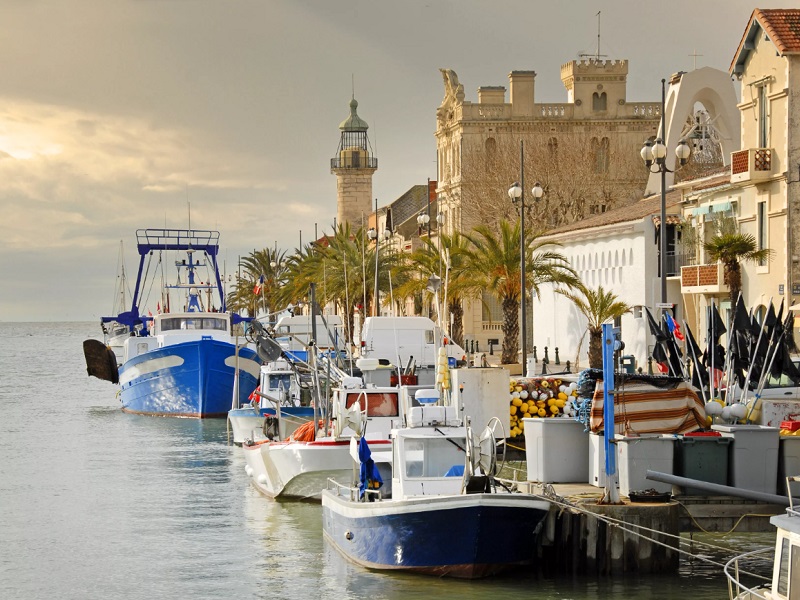
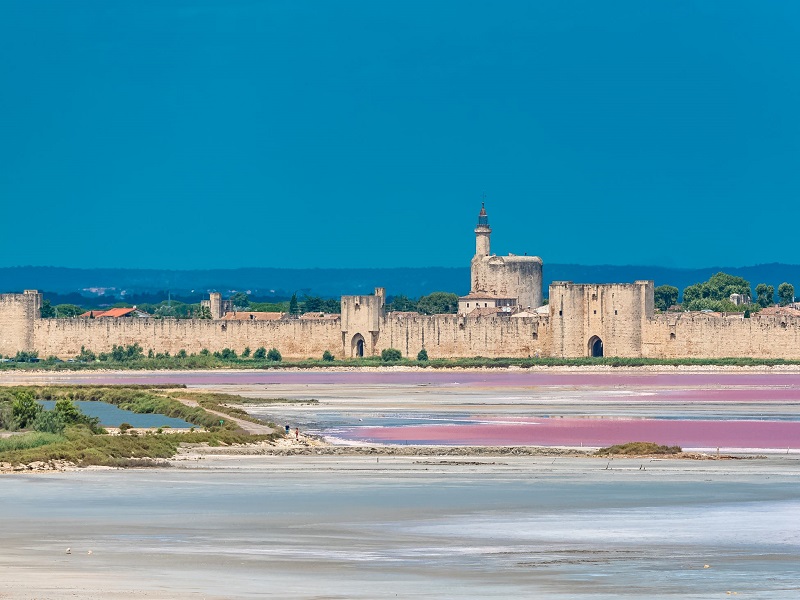
Aigues-Mortes
Aigues-Mortes, in Occitan Aigas Mòrtas, is a French commune of Petite Camargue, located at the southern tip of the Gard department, in the Occitanie region. Exposed to a Mediterranean climate, it is drained by the Vidourle, the Canal du Rhône à Sète, Canal le Vistre and by two other rivers.
It is renowned for its ramparts and its arenas, called the Plan des Théâtres and intended for the Camargue races. The architectural heritage of the town includes three buildings protected as historical monuments: the Hôtel de Grailhe, the chapel of the Château de Roquelaure, and four houses.
Saintes-Maries-de-la-Mer
Saintes-Maries-de-la-Mer or Les Saintes-Maries-de-la-Mer is a French commune located in the Bouches-du-Rhône department in the Provence-Alpes-Côte d’Azur region. Capital of the Camargue, it is also a place of pilgrimage and a seaside resort in Provence.
Built around its church from the 11th and 12th centuries and enclosed for a long time in an enclosure, the town still retains traces of this historic past today in the configuration of its often narrow streets.

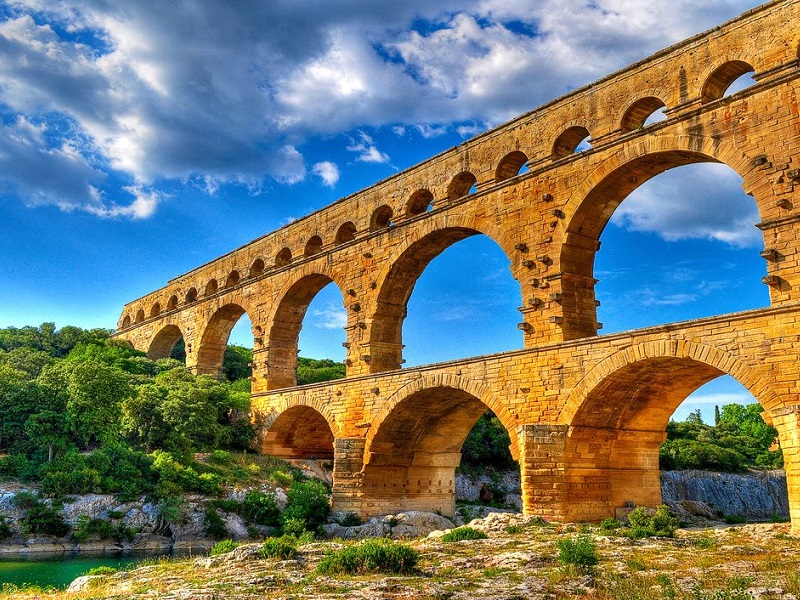
Le Pont du Gard
Le Pont du Gard is a three-level Roman aqueduct bridge, located between Uzès and Nîmes, in the Gard department. It spans the Gardon, or Gard. Probably built in the first half of the 1st century, it ensured the continuity of the Roman aqueduct which carried water from Uzès to Nîmes.
The fruit of exceptional architecture, Le Pont du Gard is one of the best preserved Roman remains in the world. Steeped in history, he was also the source of inspiration for many artists.
La Roque-sur-Cèze
To the north of the Gard department, La Roque-sur-Cèze was built on a rocky outcrop overlooking the Cèze, spanned by an old bridge with twelve arches. Dominated by the remains of an old castle and its Romanesque chapel, the village with steep cobbles and houses of blond stones with Genoese offers a breathtaking view of the Cascades du Sautadet, an exceptional natural site which adds to the attractiveness of the place.
The Sautadet waterfalls are a geological curiosity: Huge rocky block sculpted by the flow of the Cèze where there are many so called “devil’s pots” (or “giant’s pots”).
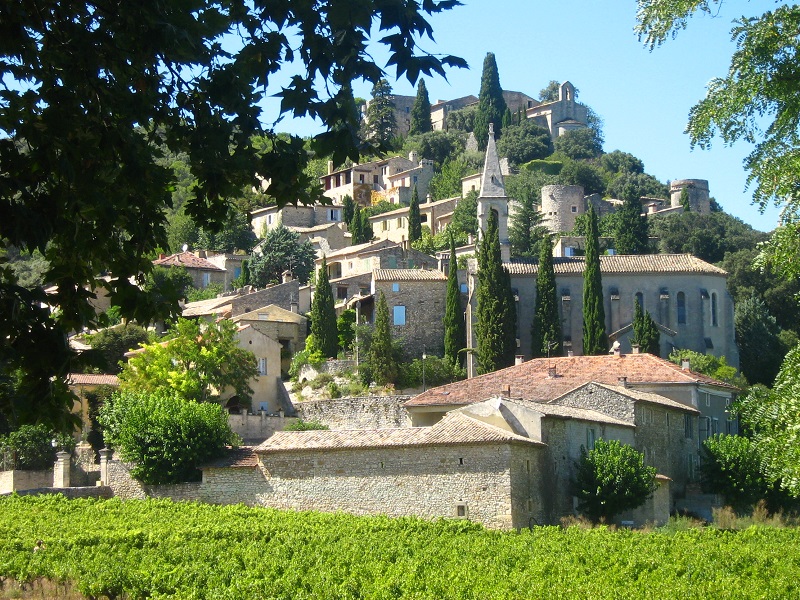
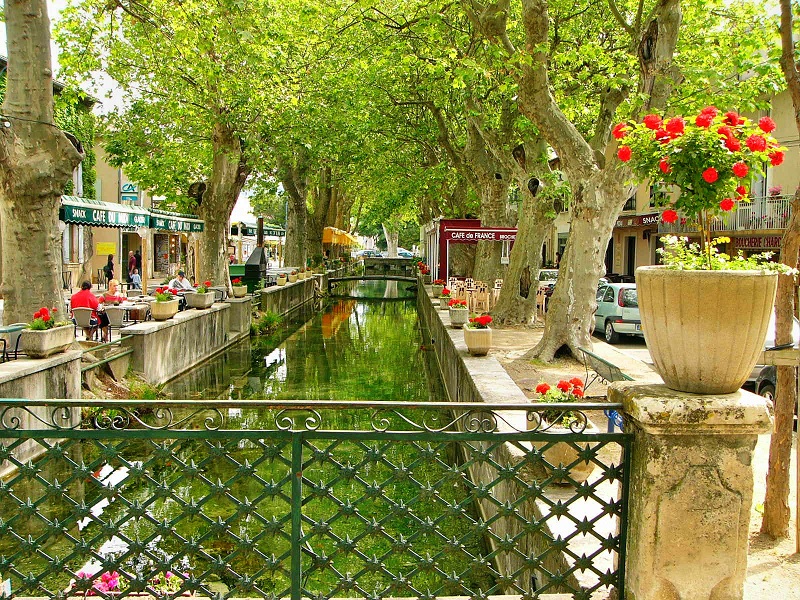
Goudargues
The village of Goudargues is located in the Cèze valley , in the north of Gard region. The town is largely covered by Mediterranean forest. It is nicknamed in the region: “the Venice of the Gard”, due to the canal which crosses the village.
Goudargues and Saint-André-de-Roquepertuis share a tennis court. For more details please visit this link.





